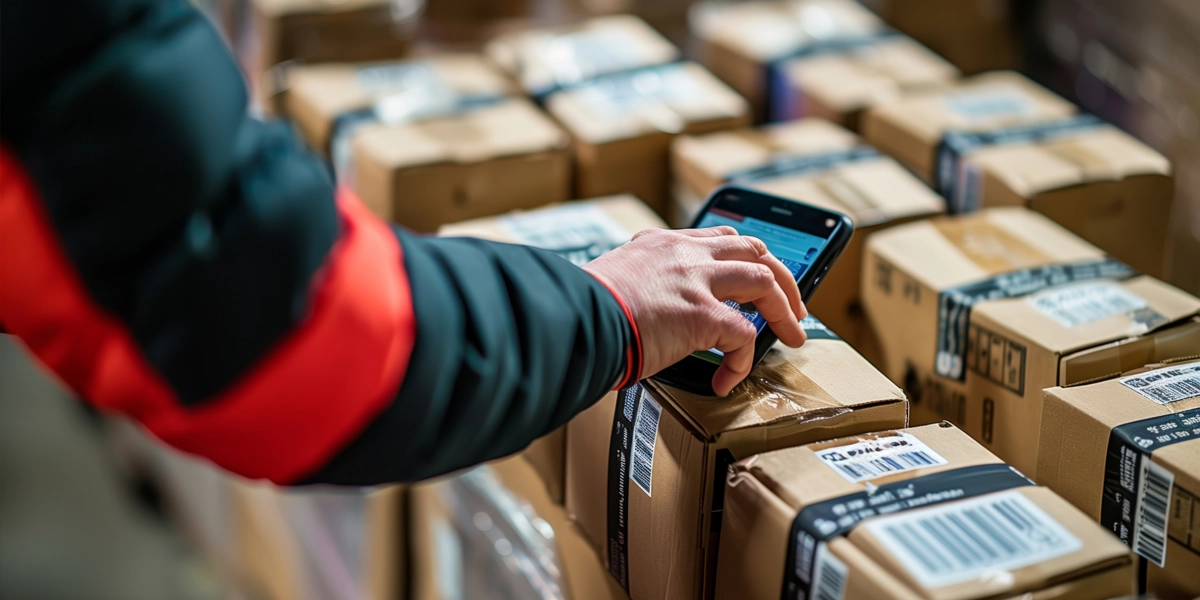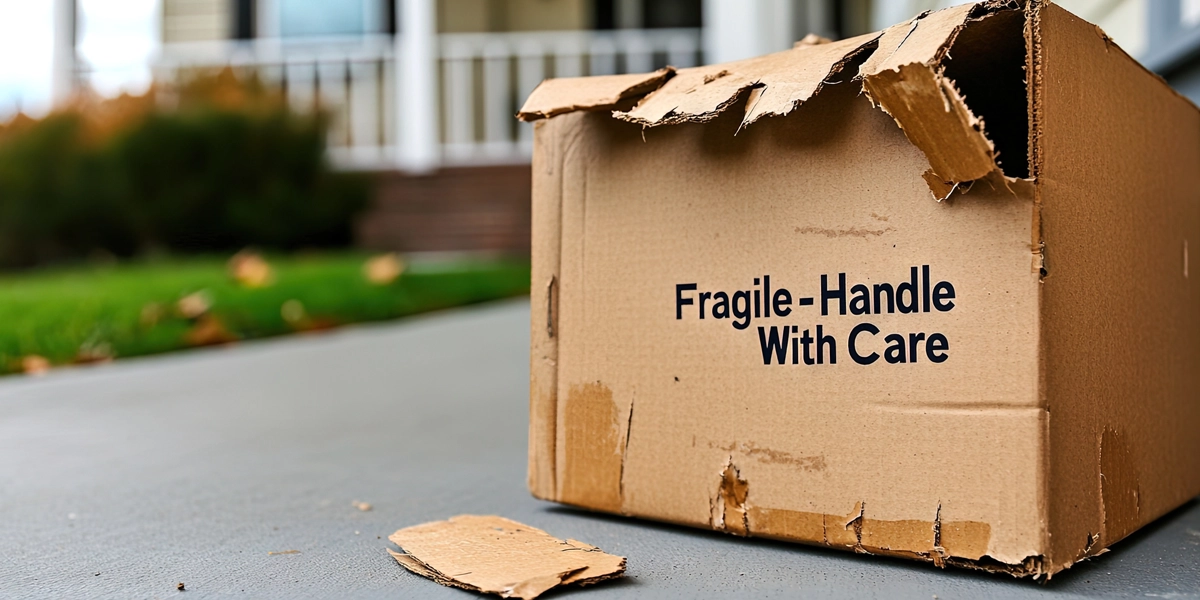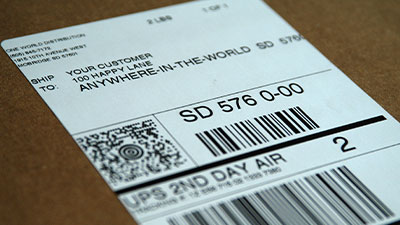In This Article:
Ecommerce brands are facing a growing challenge of increasing logistics costs, which directly affect order fulfillment expenses. As these costs rise, the pressure on profit margins increases, requiring strategic actions to find ways to reduce logistics costs.
Fulfillment expenses significantly impact an ecommerce brand’s ability to grow sustainably. If high-volume ecommerce fulfillment costs are not optimized efficiently, they can eat into profitability. Whether it’s through sustainable fulfillment practices, improving order picking accuracy, or using strategic approaches like batch picking, a capable 3PL can help you start lowering fulfillment costs and fix the holes that are draining your budget.
Optimizing fulfillment expenses isn’t just about cutting costs but improving operational efficiency and ensuring timely deliveries. This article explores five ways to reduce these costs, providing practical insights for brands seeking sustainable growth in the face of rising logistics challenges like tariffs or returns management.
1. Optimize Your Warehouse Location Strategy
Strategic placement of warehouses is a crucial factor in reducing last-mile delivery costs. By positioning your fulfillment centers closer to your target markets, you minimize the distance your products need to travel during the most expensive phase of shipping: the last mile. This reduction in transit times not only cuts costs but also enhances customer satisfaction by ensuring quicker delivery.
Key Benefits of Strategic Warehouse Placement:
- Reduced Last-Mile Delivery Costs: The proximity of warehouses to urban centers and major distribution hubs significantly lowers the expenses associated with delivering goods to consumers’ doorsteps.
- Faster Shipping Times: Quick delivery is a competitive advantage in ecommerce. Being closer to customers means shorter transit times, leading to higher customer satisfaction and improved brand loyalty.
- Efficient Resource Allocation: Strategically placed warehouses allow for optimized inventory management and resource utilization, reducing overhead and operational costs. This is where efficiency in warehousing and distribution comes into play. Leveraging the right ecommerce platform and tech stack will further improve efficiency. Partner with a 3PL that uses an integrated platform with a warehouse management system, EDI integration, and order management system to maximize your efforts and find ways to improve efficiency, both for performance and internal management.
How to Reduce Warehouse Costs:
- Evaluate Market Proximity: Analyze your primary customer demographics and position your warehouses where they can serve these areas most efficiently.
- Leverage Data Analytics: Use predictive analytics to determine optimal warehouse locations based on demand patterns, logistics costs, and market trends. The AI revolution in logistics can greatly assist with this.
- Collaborate with Fulfillment Partners: Partnering with established fulfillment providers like OWD can offer significant cost advantages through their existing infrastructure and expertise.
The strategic positioning of warehouses is fundamental in optimizing your ecommerce fulfillment operations. It’s a critical step toward achieving cost-effectiveness while enhancing service levels across the board.
2. Consolidate SKUs and Streamline Inventory Management
Achieving effective inventory management is crucial for reducing operational costs in ecommerce fulfillment. SKU consolidation plays an integral role in minimizing overstocking, which can lead to unnecessary storage expenses. By consolidating stock-keeping units (SKUs), you reduce the complexity of your inventory, which simplifies management and decreases holding costs.
Better Inventory Control
Better inventory control is essential for avoiding overstock scenarios. Overstocking not only ties up capital but also incurs additional storage fees. Implementing a robust inventory management system enables you to maintain optimal stock levels, ensuring that you only store what you need.
Accurate Inventory Forecasting
Accurate inventory forecasting powered by data analytics enhances your ability to predict demand accurately. By leveraging historical sales data and market trends, you can anticipate future needs more precisely, reducing the risk of excess inventory or stockouts. This predictive approach helps streamline ordering processes and aligns stocking levels with actual consumer demand. When choosing a 3PL, make sure they can scale seamlessly with your business during peak seasons so you don’t miss any sales.
Efficient SKU consolidation and streamlined inventory management are pivotal strategies for reducing fulfillment expenses while enhancing service delivery. Embrace these practices to effectively align your operations with market demands, driving cost savings and customer satisfaction.
3. Use Tech to Automate Pick, Pack & Ship Processes
Integrating technology into your fulfillment operations can transform the efficiency and cost-effectiveness of your ecommerce business. Automation is a key driver in reducing labor costs and optimizing high-volume ecommerce fulfillment. Here’s how:
Tools for Operational Efficiency:
- Barcode Scanning: Streamlines inventory tracking, reducing errors and improving speed during the pick-and-pack process. Accurate scanning also reduces the likelihood of misplaced or miscounted items, ensuring that orders are fulfilled correctly.
- Order Routing Software: Automatically directs orders to the optimal warehouse or fulfillment center based on factors like stock availability and proximity to the customer. This enhances operational efficiency by minimizing shipping times and costs.
Impact of Auto-Labeling:
- Error Reduction: Auto-labeling systems significantly diminish human error in labeling shipments. By automating this process, orders are labeled accurately every time, reducing the chances of mistakes that could lead to returns or customer dissatisfaction.
- Increased Speed: Labels are applied swiftly without manual intervention, accelerating the entire pick-pack-ship cycle. This not only improves order processing times but also enhances overall customer satisfaction by ensuring timely and accurate delivery of products.
Labor Savings through Automation:
Automation reduces manual tasks and allows your workforce to focus on higher-value activities. This shift translates into substantial labor savings—resources that were once tied up in repetitive tasks can now contribute to other strategic initiatives.
Incorporating these technologies aligns with best practices for reducing high-volume ecommerce fulfillment costs. As you streamline these processes, you position your business to handle increased order volumes without a proportional increase in labor expenses.
4. Personalize to Profit: Shift from D2C to P2C Fulfillment
P2C Fulfillment—Personalized-to-Consumer—is redefining the ecommerce landscape by offering a way for D2C brands to offer product personalization at scale. P2C allows shoppers to customize products with engravings, embroidery, or direct-to-object printing. Customers can also customize packaging and include a personalized greeting card for the ultimate unboxing experience.
The Power of Personalization
Personalization isn’t just about customization; it’s a strategic advantage that drives higher margins and enhances customer loyalty. Personalized touches like engraving names on products or including custom greeting cards with orders are easy upsell opportunities and quickly boost average order values. These enhancements not only elevate the unboxing experience but also create emotional connections, encouraging repeat purchases and brand advocacy.
Product personalization is the next big thing in D2C ecommerce, and the research speaks for itself:
77%
of consumers have chosen, recommended, or paid more for a brand that provides product personalization.
- 20% of consumers would be very willing to pay a premium for products that they had personalized.
- 77% of consumers have chosen, recommended, or paid more for a brand that provides product personalization.
- 73% of consumers want personalized product packaging and delivery, and only 40% of brands can actually provide such services.
- 74% of Gen Zers are interested in personalized products (vs. 67% of Millennials, 61% of Gen Xers, and 57% of Baby Boomers).
- Consumers are willing to pay on average a 25% premium for personalized or customized items.
- 48% of consumers will wait longer to receive a personalized product.
Leading the Way with One World Direct
One World Direct (OWD) stands at the forefront of this shift, providing innovative P2C services that set brands apart. OWD is the leading 3PL offering personalized fulfillment services. By integrating seamless personalization options such as embroidery, laser engraving, and personalized greeting cards, OWD enables ecommerce sellers to turn fulfillment into a new profit center. The free plug-in offered by OWD allows easy integration into existing shopping carts, streamlining the process of personalizing products without additional complexity.
5. Use Shipping Strategies to Reduce Costs
Reducing transportation costs is crucial for ecommerce fulfillment. By implementing effective shipping strategies, you can have a significant impact on your profits. One approach is to move freight between different service types and carriers strategically. This means choosing the most cost-effective carrier for each part of the journey, allowing you to take advantage of discounted shipping rates and service levels.
Here are some shipping strategies you can consider:
- Freight Consolidation: Combine shipments to create full truckloads, thereby reducing costs per unit.
- Carrier Diversification: Utilize multiple carriers to leverage better pricing and service options.
- Zone Skipping: Ship goods by zone to minimize handling and expedite delivery times.
Data analytics is essential in this optimization process. By analyzing historical shipping data, you can identify spending trends and find areas where expenses can be reduced. Advanced analytics tools can provide insights into:
- Route Optimization: Determine the fastest and most economical routes.
- Carrier Performance Analysis: Evaluate carriers based on cost efficiency and reliability.
- Demand Forecasting: Align shipping schedules with demand peaks to ensure cost-effectiveness.
Consider integrating automated systems that streamline these analyses and provide real-time data for decision-making. Software solutions that automatically select the best carrier based on criteria such as price, speed, or reliability can improve operational efficiency.
Examples of effective shipping management practices include:
- Dynamic Pricing Models: Implement models that adjust prices based on current demand and supply conditions.
- Flexible Delivery Options: Offer customers a range of delivery speeds at different price points to accommodate varying preferences.
- Cost Monitoring Dashboards: Use dashboards to continuously track shipping expenses against benchmarks, allowing for timely adjustments.
By adopting these five essential strategies, your ecommerce business can achieve significant savings on fulfillment expenses, ensuring that profits are maximized without compromising service quality.
If Logistics is Still Just an Expense, It's Time to Make a Switch
Optimizing ecommerce fulfillment expenses is crucial to maintaining healthy profit margins, especially in a high-volume setting. By implementing these five cost-saving strategies, your brand can transition to low-cost fulfillment while enhancing customer satisfaction and operational efficiency.
- Strategic warehouse placement reduces last-mile delivery costs.
- Streamlined inventory management minimizes overstocking and storage fees.
- Automated pick, pack, and ship processes cut down on labor costs.
- P2C fulfillment personalization boosts customer loyalty and revenue.
- Innovative shipping strategies lower transportation expenses.
One World Direct stands as your ideal partner in achieving these goals. With expertise in ecommerce fulfillment optimization, cutting-edge technology, and personalized service options, OWD empowers your brand to reduce high-volume fulfillment costs while improving performance and adding value-added services.
OWD has been a premier ecommerce fulfillment company for more than thirty years. In addition to offering comprehensive fulfillment services, we also provide ecommerce customer service solutions through our call center services. Our American agents deliver superior customer service by handling your emails, chats, and calls.
All our plans are customized to fit your unique needs. Schedule a consultation and chat with one of our logistics experts to learn how to lower fulfillment costs while supercharging your logistics experience.
FAQs (Frequently Asked Questions)
What are the main challenges ecommerce brands face with fulfillment costs?
Ecommerce brands encounter rising fulfillment and logistics costs, which can significantly impact their profit margins. To maintain profitability at scale, fulfillment expenses must be optimized.
How can optimizing warehouse location reduce fulfillment costs?
Strategic warehouse placement can drastically lower last-mile delivery costs and improve transit times. Being close to target markets allows for faster shipping, which is crucial for customer satisfaction. One World Direct's U.S.-based operations enable quick reach to 99% of the U.S. market.
What is SKU consolidation and how does it help with inventory management?
SKU consolidation involves streamlining product offerings to minimize overstocking, which in turn reduces storage fees. Accurate inventory forecasting through data analytics enhances inventory control.
How does automation in the pick, pack, and ship processes benefit ecommerce businesses?
Automation tools such as barcode scanning and order routing software increase operational efficiency by reducing human error and speeding up processes. This leads to substantial labor savings in fulfillment operations, allowing businesses to optimize their fulfillment costs.
What is P2C fulfillment and how does it enhance customer loyalty?
P2C (Personalized-to-Consumer) fulfillment focuses on providing personalized experiences, such as engraving or custom greeting cards, which can drive higher margins and foster customer loyalty. One World Direct offers unique personalization services that enhance brand engagement.
What shipping strategies can ecommerce brands leverage to reduce costs?
Ecommerce brands can optimize transportation costs by strategically moving freight between different service types and carriers. Utilizing data analytics helps identify spending trends and opportunities for cost savings, while effective shipping management practices contribute to lowering overall fulfillment expenses.
In This Article:
Subscribe to our Newsletter
Tincidunt urna mauris eu quam vulputate lobortis sit. Purus feugiat arcu nunc quisque massa ut.



























